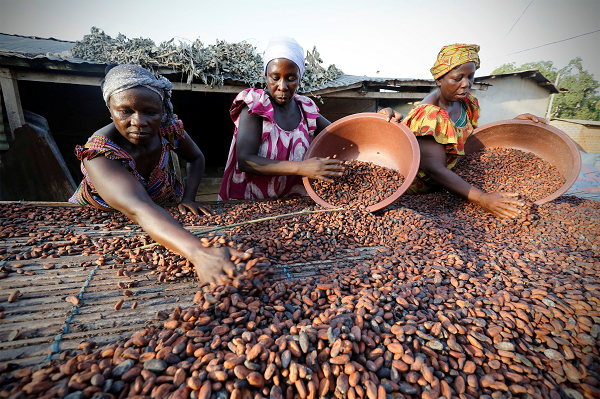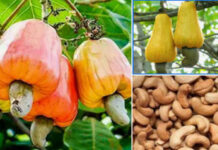Anytime, the topics of low income and worsening livelihood of cocoa farmers are raised in Ghana, people mistakenly assume Ghana to be the cocoa farmer and thus they argue that Ghana needs to add value to its cocoa beans to improve its farmers’ livelihoods.
However, what is often ignored is the fact that Ghana is a country and the cocoa farmer is an individual. Hence matters of value addition in the cocoa sector should not be measured only on the macro-economic benefits it creates but also on the micro-economic benefits which include how it improves the individual farmer’s income, industry value capture, and livelihood.
This article is not debunking value addition but rather questioning the relevance if it doesn’t improve the livelihoods, income, and or value capture of smallholder cocoa farmers.
Who benefits from the growing value addition in producing countries?
Since 1960, cocoa farmers’ income/value captured from the sector has declined from 16% to 3%, as explained in my article, even though value addition in the sector is on the rise especially in producing countries like Ghana.
For example, Ghana started seeing the increase in its value addition for the cocoa sector based on two main reasons.
The first reason was the 20% discount given to encourage investments in domestic value addition and employment creat
The second reason was the giving of monetary, non-monetary incentives, and infrastructure support to reduce their cost and ease of operations.
Below is the list of incentives that cocoa processing firms get in Ghana under the Export processing zones agreements:
monetary incentives:
- 100% exemption from payment of direct and indirect duties and levies on all imports for production and exports from free zones.
- 100% exemption from payment of income tax on profits for 10 years which will not exceed 15 percent thereafter.
- Total exemption from payment of withholding taxes from dividends arising out of free zone investments.
- Relief from double taxation for foreign investors and employees where Ghana has a double taxation agreement with the country of the investors or employees.
Non-monetary incentives:
- No import licensing requirements.
- Minimal customs formalities.
- 100% ownership of shares by any investor –foreign or national –in a free zone enterprise is allowed.
- There are no conditions or restrictions on repatriation of dividends or net profit; payments for foreign loan servicing; payments of fees and charges for technology transfer agreements and remittance of proceeds from the sale of any interest in a free zone investment.
- Free Zone investors are permitted to operate foreign currency accounts with banks in Ghana.
- At least 70% of the annual production of goods and services of Free Zone Enterprises must be exported; consequently, up to 30% of the annual production of goods and services of a free zone enterprise is authorized for sale in the local market.
- Free Zone investments are also guaranteed against nationalization and expropriation.
These incentives are real money that increases the value capture and wealth of processing firms just for creating employment and foreign exchange earnings.
However, cocoa farmers in Ghana aren’t just 800,000 employers/entrepreneurs/business people, they also provide livelihoods to over 6,000,000 people, hence provides more jobs than the processing factories yet receive no incentives.
Cocoa farmers’ income/value continues to dip (16% to 3%) whereas value addition in the sector in Ghana has grown from 0% to an annual estimated average of 20%.
The loss of the taxes import duties and levies (which go as incentives to value-adding firms) lead the government into levying local firms and citizens which (includes cocoa farmers) with higher taxes to compensate for its lost revenue.
Value-adding firms can argue that they embark on poverty alleviation interventions for cocoa farmers, but as I explained in my article, these interventions send the farmers one step forward and ten times backward.
The jobs that value-addition firms create aren’t those that most cocoa farmers’ children qualify to apply.
This is because the cocoa farmer’s income is so low, most of them are unable to send their kids to good schools to move up the ladder towards gaining a degree and becoming relevant for employment in the value-addition section of the value chain.
Again, the farmer’s income is so low, they are unable to save enough and consolidate to setting up a processing plant to take advantage of the financial incentives given by the government, a theoretical argument someone may be thinking about.
Value-adding firms gaining all these incentives listed above, some also receive special infrastructure support in the processing zones like access to roads, electricity, water, internet services, etc. to ensure they operate smoothly.
However, our 800,000 Ghanaian Cocoa farmers who provide livelihoods for over 6,000,000 Ghanaians, are left with unmotorable roads, inadequate access to potable water, inaccessible electricity, and are almost cut out of internet services.
The farmer needs these amenities and infrastructure not only to enhance their farming technology but to improve the livelihoods of themselves and those who depend on them.
So, the question is, the cocoa farmer and the value-adding actor, who is really of benefit to Ghana and who requires more economic support?
The Ghanaian Cocoa Farmer currently receives an average of 70% of the world market price of cocoa beans and forfeits the remaining average of 30% to the Ghana Cocoa Board to fund the support services they receive from them.
Historically as demonstrated in Figure 2 below, Cocoa farmers have forfeited much more including receiving only 50% of the world market price in the 2000/01 crop year.
So the fertilizer subsidies, extension services, free seedlings, mass spraying, etc that these farmers receive from Cocobod are indirectly funded by the farmers, not a gift given to them like it is done for value-adding firms as highlighted above.
Figure 2: Producers prices received by Cocoa farmers as a percentage of the world market price of cocoa beans from 2000 to 2015. Source: (ICCO, 2012)
To re-iterate, Cocoa farmers do not and are unable to benefit from the rise in value addition in the cocoa sector in Ghana and across the world.
If the cocoa-chocolate industry cares about the farmers as it claims, then it should stop treating Ghana as the cocoa farmer and narrow down to the cocoa farmer to see how the value addition rhetoric we tout as the solution to cocoa farmers’ poverty alleviation and value-capture works in practice.
The success of the growth in value-addition should be measured on how it improved cocoa farmers’ income and value capture.
That will be the first step in liberating cocoa farmers from continuously feeding rich elephants yet eat as poor ant.
Source; www.thecocoapost.com








